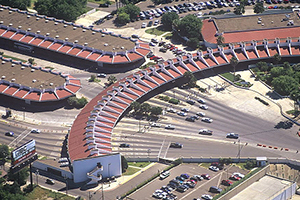Application Note: Intercomp Strip Sensors at Border Crossing for Tolling and Screening
Category: ITS/Enforcement
October 18, 2018
As the busiest truck entry point on the US-Mexico border, the Port of Laredo, Texas uses Weigh-In-Motion (WIM) technology for tolling and overweight detection to keep traffic flowing. However, the drains required for in-ground, pit frame-based WIM systems had increasing frequency of M aintenance issues, which increased costs while also causing lane
closures and backups.
“Strip sensors have decreased equipment maintenance operations and downtime previously required for each lane, while delivering the desired Weigh-In-Motion accuracy.” R. Barr, TransCore™
In operation since 1998, WIM systems are integrated into the TransCore™ Infinity Digital Lane System to automate weighing, vehicle classification, tolling, and overweight detection of vehicles at a variety of speeds. The previous strain-gauge pit-frame WIM sensors delivered the desired weight accuracy, but suffered from maintenance issues which cased lane closures that the border crossing cannot afford with their high traffic volume.
To upgrade their systems, TransCore™ installed Intercomp strain gauge strip sensors, which can be done in existing pavement and requires only a single day per lane, minimizing lane closures. Placed in channels cut in the roadway and grouted in place, there are no drains which require periodic maintenance. When integrated into automated systems, such as the Port of Laredo border crossing, the sensors also eliminate the need for trucks to stop for weight inspection when the WIM system indicates they are within weight tolerances.
When compared to older technology, the integrated Intercomp WIM strip sensors embedded in each lane provide greater accuracy while reducing existing maintenance costs. With a high traffic load at the border, the Intercomp strip sensors allow automation of weight-based transactions, which will be vital to meet the steady growth in traffic expected at the border crossing over the next decade.
Attachments:



